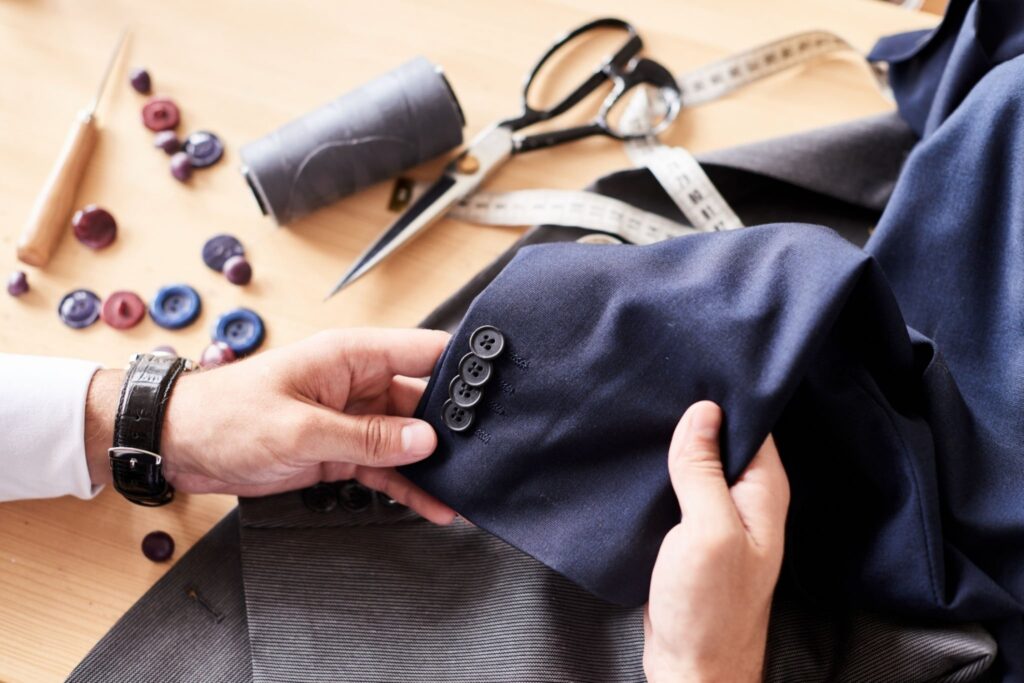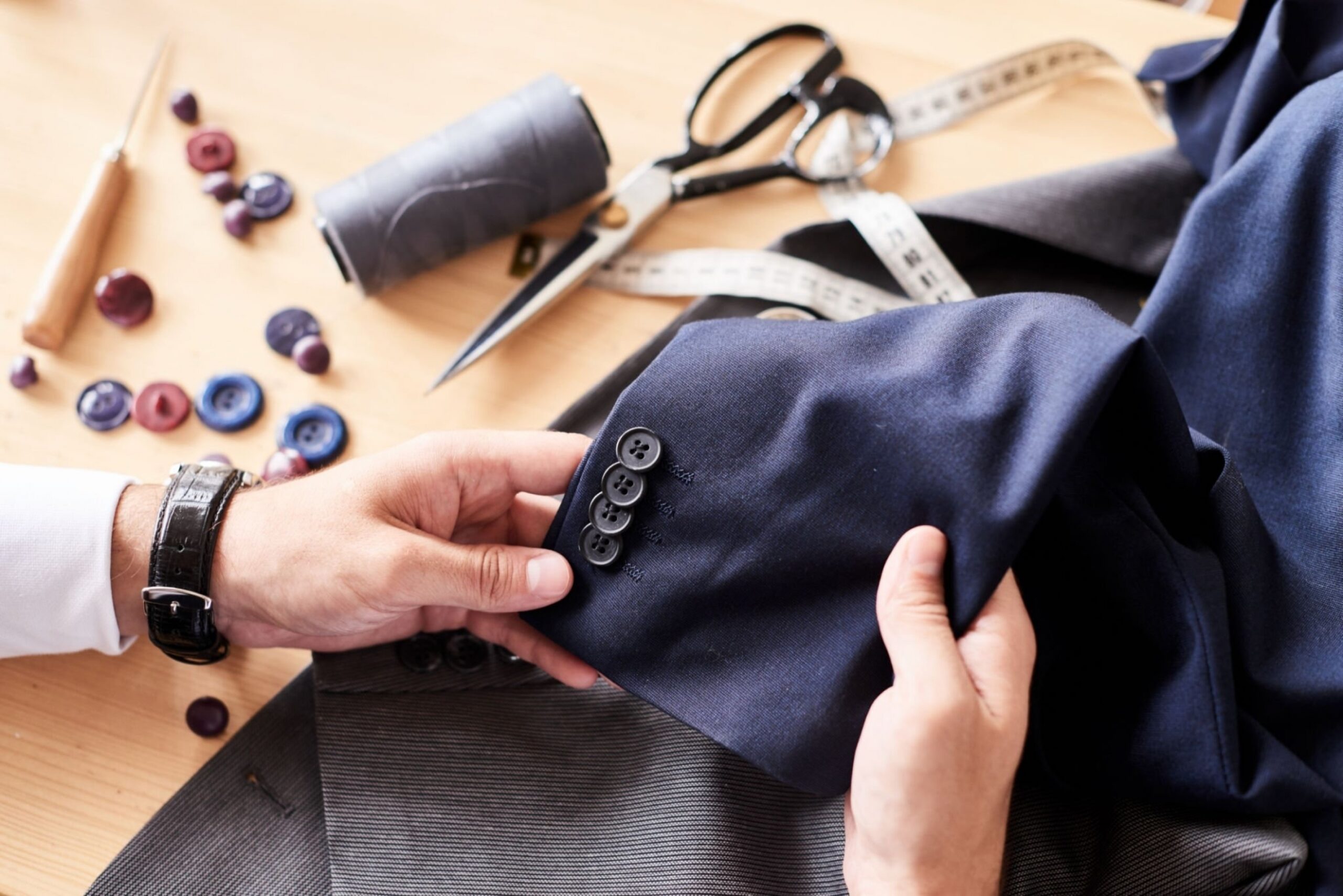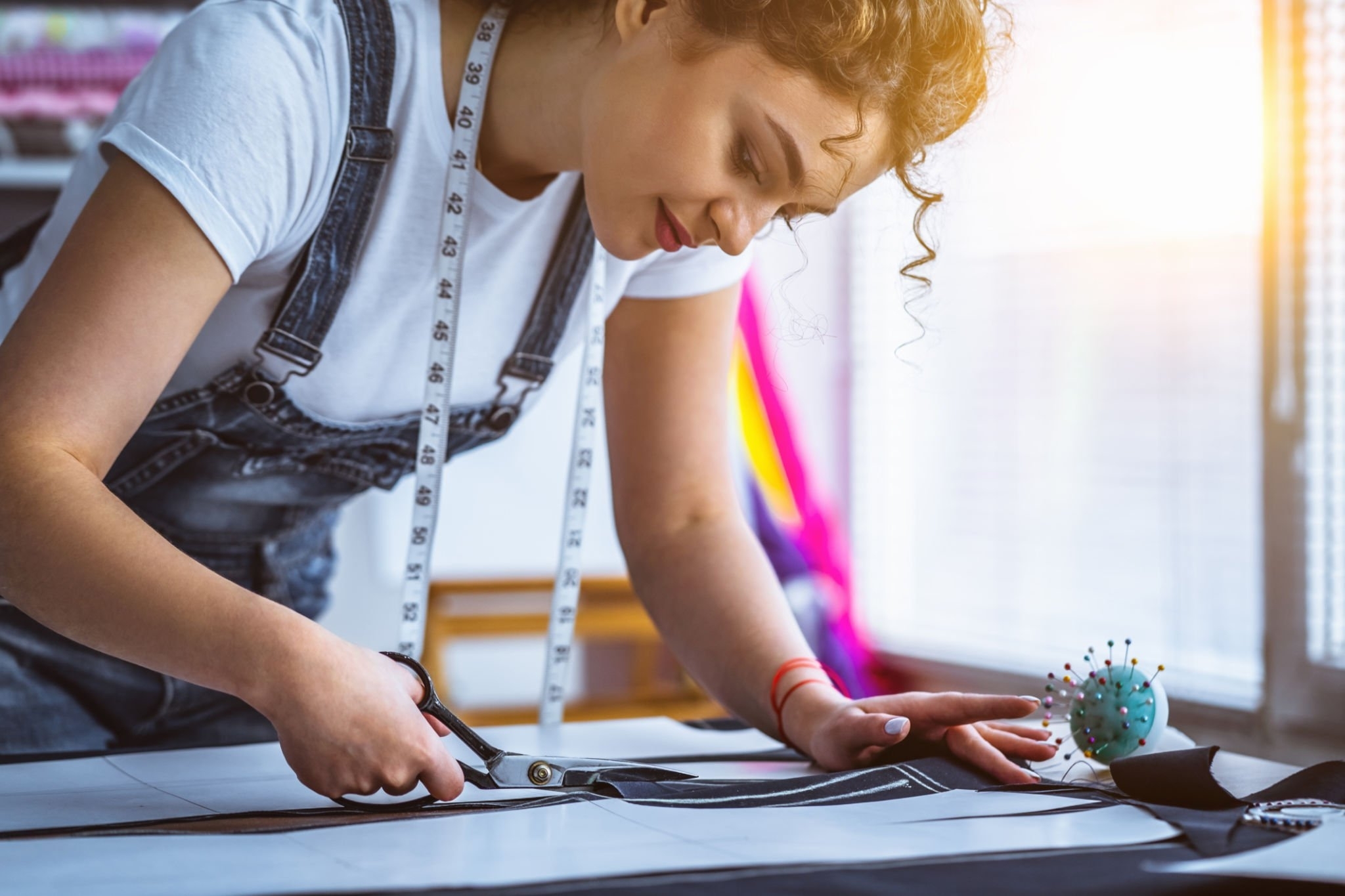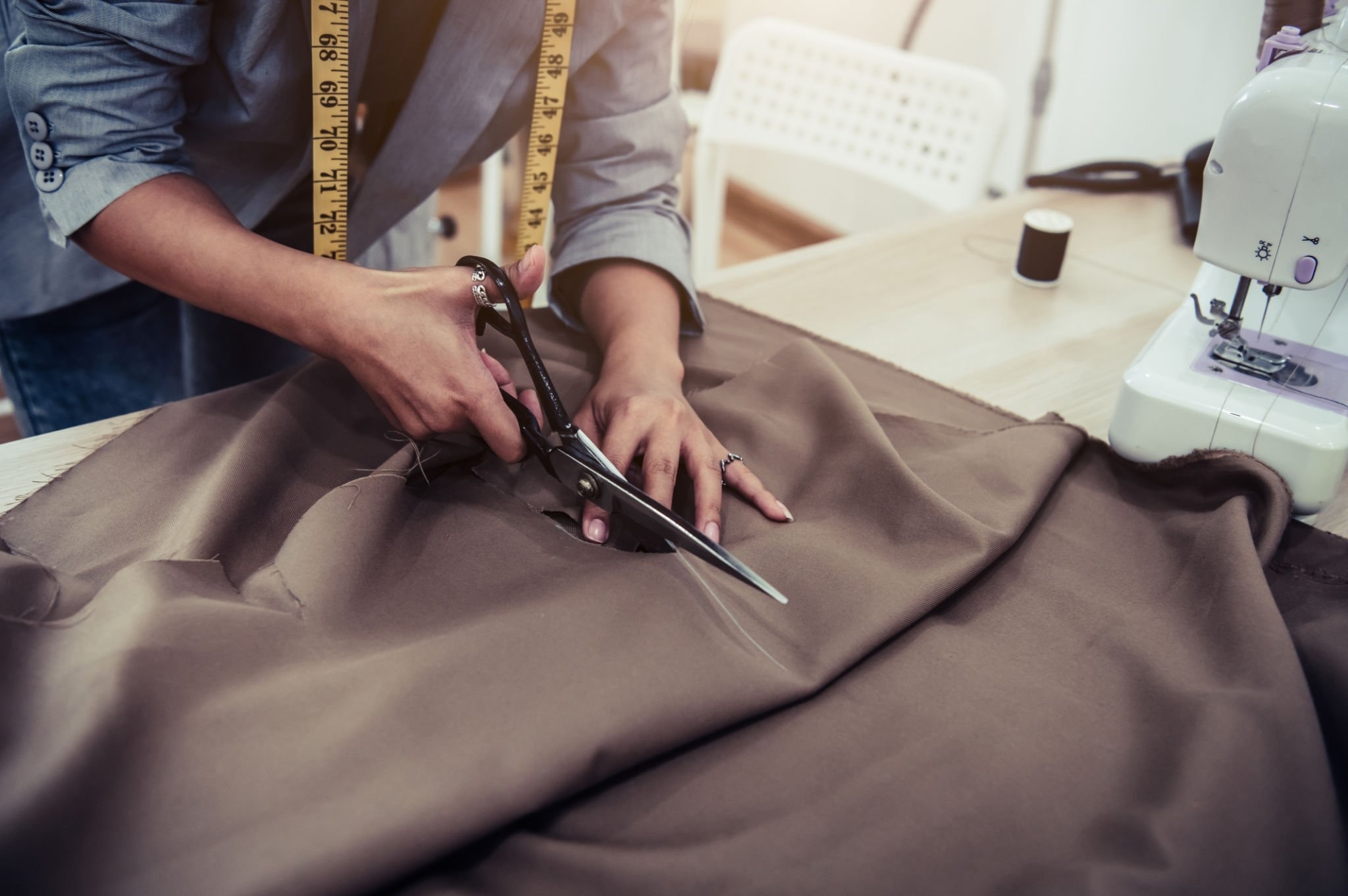From tucking in your jeans’ waist to making the most of loose tops, trims are an important way of making a garment look better and giving it a finished look. They help define a garment’s size, style, and fit and add personality. In fact, trims have been the key to making many garments trendy and eye-catching. They are also a great way of adding unique style to your wardrobe.
Trims can be found on almost every garment today. From jeans to t-shirts, trousers to dresses, they can be seen in everything from casual outfits to more formal ones. What are trims? And what types do you need to know about? We’ll tell you all that and more in this blog.

6 Types of Garment Trims
Swing Tags
– Swing tags are a type of trim commonly used in garments. They are usually silver or gold-coloured and can be attached to the garment’s neckline, hem, or pocket.
– Swing tags can be customized with text or graphics. This allows you to add a personal touch to your garment without purchasing additional accessories.
– It’s easy to remove swing tags and label them for future use. This makes it easier to track inventory and manage sales.
– Swing tags are an affordable way to add customization and branding to your garments. They are easy to use and don’t require any sewing skills.
– When used correctly, swing tags can help increase brand awareness and clothing sales.
– Maintaining accurate garment tracking is essential in the garment industry. Using swing tags is an easy way to do this and increase brand awareness and revenue for your brand.
- How to start a fashion consultant businessFashion is about expressing yourself, and what better way to do that than through clothes? Whether you are a designer, blogger, business owner, or fashion enthusiast, you may have thought… Read more: How to start a fashion consultant business
- 7 Steps to Import Fashion bulk Clothing from ChinaWhen it comes to sourcing clothes from China, you’d be surprised that the country is the largest clothing supplier in the world. It is a country of fashion with good… Read more: 7 Steps to Import Fashion bulk Clothing from China
- How to find China clothing manufacturer (Tips and strategies)When you decide who to manufacture clothing from, you will do well to consider sourcing raw materials from China. There are many reasons for this—and the main one is cost.… Read more: How to find China clothing manufacturer (Tips and strategies)
- How to write a business fashion planIt is no wonder fashion is an industry with constant innovation. It is a business that requires constant research and development to stay on the top of the mind of… Read more: How to write a business fashion plan
- Skills to help you succeed as a fashion consultantIf you’re interested in becoming a fashion consultant, developing the skills above is essential. A strong understanding of fashion trends and popular styles will help you identify what is trending… Read more: Skills to help you succeed as a fashion consultant
- The competitive advantage of Vietnam clothing manufacturersVietnam is one of the fastest-growing apparel industries in the world. This industry has been on an upward trajectory since 2010, and it’s expected to grow further in the years… Read more: The competitive advantage of Vietnam clothing manufacturers
Overrides
Trims are embroidery or sewing embellishments used to add decorative touches to garments. There are many types of trims, each with unique applications and uses. Some common trims include underarm, side seams, hemline, cuff, pocket, and sleeve. Each trim type has its own benefits and drawbacks.
Underarm trim covers the armpit area on a shirt or blouse. This trim can add subtle detail to the garment without making it too obvious. It’s ideal for making garments more attractive and eye-catching.
Side seam trim is used to line the edges of skirts or dresses. This trim is typically made from fabric with a shiny or satin finish. It can have various designs embroidered on it. It can give the garment extra flare or edge without making it too busy or overbearing.
Hemline trim is used to line the bottom of skirts or dresses. This trim is typically made from fabric with a shiny or satin finish. It can have various designs embroidered on it. It can be used for added flair or edge without making the garment too busy or overbearing.
Cuff trim is used to line the cuff of shirts or blouses. This trim is typically made from fabric with a shiny or satin finish. It can have various designs embroidered on it. It can be used for added flair or edge without making the garment too busy or overbearing.
Finally, pocket trim lines the pockets of shirts or blouses. This trim is typically made from fabric with a shiny or satin finish. It can have various designs embroidered on it. It can be used for added flair.
Rivets
Trims are the finishing touches of a garment. They can be used to make the garment more appealing and fashionable. The use of trimming helps to decorate and shape a garment. Various types of trimming are used in fashion accessories, such as rivets, side stitches, centre panels, collars, hems, etc.
Different types of trimming give varied effects to the garments making them more attractive and fashionable. Trims have different functions in garments, making them more appealing. Thus, they are widely used in clothing accessories like t-shirts, skirts, dresses, blouses, etc.
Back rivets: These are used to secure the garment’s front and back together.
Side stitches: These are used for sewing the side seams of a garment.
Centre panel: This is the area of a dress or shirt where the front and back meet. It can be adorned with sequins or embroidery.
Collar: This fabric extends from the neckline down to the bottom edge of the shirt. It can be adorned with sequins or embroidery too.
Hem: This is the edge of a garment that meets the floor. It can also be decorated with sequins or embroidery as per choice.
Embroidered and Woven Labels
Trim is the finishing touches of garments. Different types of trims serve different purposes. Embroidered and woven labels are the most common ones. Embroidery is a form of sewing where fine fabrics add a finishing touch to garments. It is made with fine fabrics, yarns, lace, sequins, or embroidery thread. Woven trims are made of sturdy fabrics and are used in functional garments such as t-shirts and jeans. They are often made of polyester cotton or interlining. Pockets are the parts of the garment that are sewn into the garment. They add an extra touch of style and class to the garment. Bow ties are made of ribbon or other materials and are used to give an elegant finishing touch to an outfit. Zippers can be found on various parts of a garment, from the front to the back, making them easier to wear and take off.
They can also be found in clothing accessories like sunglasses and hats to make them more functional and fashionable.
Badges
There are various garment trimming options, each with unique benefits and utility. Lapel trims are the thin fabric attached to the front of a jacket, blouse, or other clothing. They can serve as a stylish accent or provide added durability and protection against the elements. Collar trims are also known as tacks or braids. These pieces of fabric are sewn around a shirt’s or blouse’s neckline, adding visual interest and making the garment more durable. Cuffs are the hemline on a shirt’s or blouse’s sleeves, adding extra length and making the garment more versatile. Sleeve trims are commonly found on dresses, making them more durable and water-resistant. Trouser trims can be used on pants for added durability or for style purposes. Belt trims are often seen on dresses, making them more durable and water-resistant.
Trimming is essential to creating any garment and should not be overlooked. Not only does it add aesthetic appeal, but it also helps to ensure the garment lasts longer and looks better as it ages.
Leather Patches
Trims are the finishing touches on an outfit. They can be anything from sewing a patch onto a jacket, finishing the bottom edge of a hem with special trimming, and sewing pockets and buttons onto garments. In this article, we look at the six types of garment trims you should know about.
Narrowing: Trims that narrow an article of clothing by eliminating excess fabric. These include binding trims, seams, and pockets & buttons.
Binding: Trims bind two pieces of cloth together, such as at the waist or neckline. These include braid trims and, tacks & needles.
Finishing: Trims applied to the finished edge of an article of clothing. These include binding trims, tacks & needles, sewing machine tails, and gimp tape.
Seaming: A trim sewn into the seam allowance, usually on the inside of a garment. These include braid trim and three-corded pearl embroidery trimmings (also known as tassel embroidery).
Hemming: A trim that finishes the bottom edge of a hem, such as a hem tape and stitches.
Frequently Asked Questions
What are trims
What common types of trim are used in the clothing industry?
Shoulder trim is also very common and can be made from lace, fabric, sequins, rhinestones, or beads.
What are the different types of trim that can be found on a garment?
Hem trim is the most common type of trim, and it is used to cover the edge of the hem.
Neckline trim is used to cover the neckline of a garment.
The front waistband trim covers the front waistband of a garment.
The back waistband trim covers the back waistband of a garment.
Sleeves trim used to cover the sleeves of a garment.
Pocket trim is used to cover the pocket of a garment.
Conclusion
When you cut fabric, you also cut trimming. These are used to finish the edges of a garment and give it a tailored look. They can be used for decoration, embellishment, and adding strength. While embroidery and woven labels are the most standard trims, there are many more such as leather patches, badges, and swing tags. The types of trims mentioned above are popular choices in the industry. Try experimenting with them to complement your designs!




